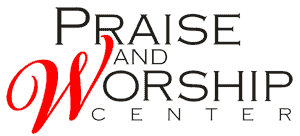The Real Thing…
They said you could taste it – when it was the real thing. It was back in the 1970s. And it was the marketing theme of a soft drink competing in a jumble of other similar products all claiming to be just as good as “the real thing.” And, suddenly, I began to even hear the catchy little song that went along with it (“It’s the real thing … la de da, la de da …“).
It came back to me a couple of weeks ago, when I received a counterfeit $20.00 bill. Of course, when I made a deposit my bank informed me that it was not real and they took it away from me. U.S. Secret Service agents – those who are tasked with being able to discern counterfeit currency from the real thing – don’t actually study counterfeit money. Rather, they study real money. They don’t spend their time trying to memorize all the possible fake and false variations of our currency. They focus on everything they can possibly learn about our real currency: how it looks sideways and upside down, how it smells, how it feels and sounds when it’s touched and crinkled up, how it reacts to light and shadow and appears under a magnifying glass … even how it tastes. Because when we know a lot about what’s real – know it well and intimately and intentionally – we can recognize all the false and counterfeit competition intuitively. We will instinctively recognize “the real thing.”
During my 50th high school reunion, a group of us were sitting around a banquet table, all admiring the rather stunning floral centerpiece in front of us. And, one by one, we all reached out to touch it – we felt the petals, the stems, the leaves, we looked at the colorations and the veins on the undersides, and then we smelled the fragrances. It was so perfect, we wanted to verify its authenticity, and so we brought our combined human senses to the judgment of it, our many and varied experiences with the natural world – our knowledge of “the real thing.”
I suspect we might find unexpected value if we simply applied this sort of model to ourselves right now – to our humanity, to our human-ness, to our connectedness as real, living, human beings. Here we are in the midst of trying to untangle the subtle signs and signals and sinews of artificial interference that has begun to loom over us and our creative arts – in particular our writing skills. We are trying to learn how to tell this counterfeit from “the real thing.” But I suspect we might be better served if we would focus more of our curiosity and understanding, our intentionality and purpose, on developing more familiarity toward our fellow human beings. Perhaps we should not study the “bots” so much as we should pay attention to “the real thing” within our shared humanity.
Perhaps if we had real conversations without judgement but with empathy. Listened with purpose. Brought sincere intentionality to how we think and express ourselves individually. Tried to hear accurately. Shared openly. Understood with compassion. Found our similarities – of joys, sorrows, memories, visions. Appreciated our subtleties of being human. Celebrated our strength of diversity. Shared different collective memories. Pledged our responsibility for one another. Strove to genuinely and randomly recognize each others’ voices.
I suspect if we paid real attention to each other as human beings with all the energy and intention, the insight, the intellect, and the understanding – of which we are certainly capable – and which we now expend on trying to know artificial interlopers – we might have no trouble discerning the difference between ourselves and the counterfeits.
When Jesus asked the disciples who do you say that I am. He learned that they knew that Jesus was the real thing, the Son of God. I have no idea why I have such faith to be able to instinctively know when Jesus is “the real thing.” But I do. And I suspect our future reality – our future journey to Heaven – depends on it.
